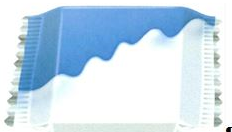The Full Court of the Federal Court’s decision in Coretell Pty Ltd v Australian Mud Company Pty Ltd [2017] FCAFC 54 has clarified the date from which the owner of an innovation patent is entitled to compensation for infringement of the innovation patent. In the case of an innovation patent which has been filed as a divisional application, the Court’s decision significantly alters the time from which relief can be claimed, and has the potential to dramatically reduce the amount of compensation to which the patentee is entitled.
A previous decision of the Federal Court of Australia (Britax Childcare Pty Ltd v Infa-Secure Pty Ltd (No 3) [2012] FCA 1019) held that the owner of a divisional innovation patent was entitled to relief from the date that the “parent” application became open for public inspection (OPI). This allowed a patentee to strategically file a divisional innovation patent with claims tailored to read on to a competitor’s conduct, and then claim relief from the parent’s OPI date (which may have been some years earlier). As Justice Burley noted in Coretell, this produced the unattractive result of a person being liable to pay compensation for acts of infringement pre-dating the existence of the innovation patent said to have been infringed.
Justice Burley (with whom Justice Nicholas and Jagot agreed) corrected this anomaly and made clear that the relevant date for relief for infringement of an innovation patent is its date of grant. This diminishes the strategic benefit of patentees filing divisional innovation patents – although divisional innovation patents can still be tailored to target the conduct of a potential infringer, the patentee will only be entitled to relief from the date the divisional innovation patent was granted, and therefore publicly accessible, and not before.
By: Alex Dunlop and Nakita Wilkinson

